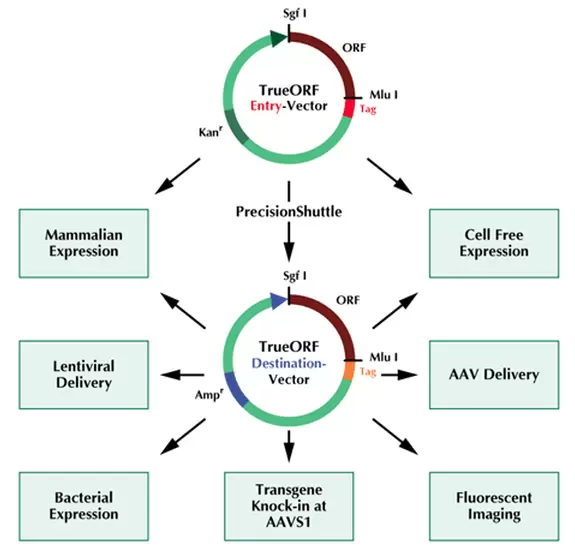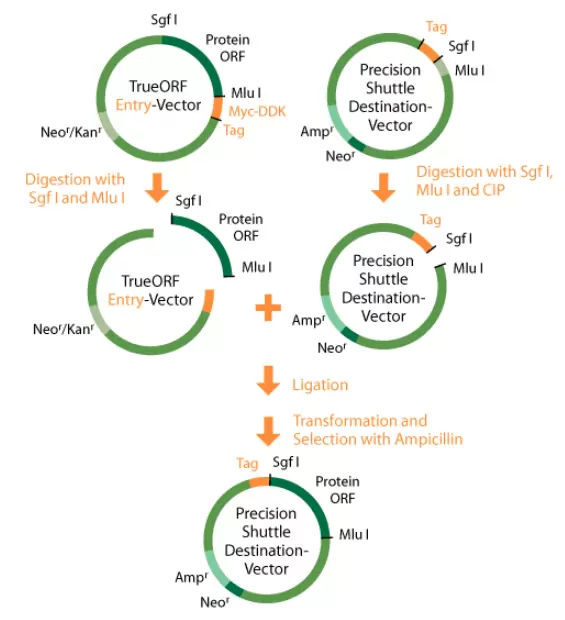
PrecisionShuttle System
PrecisionShuttle System
The same ORF insert in multiple settings for diverse applications.
Our partner OriGene provides genome-wide TrueORF clones for human, mouse and rat genes. Each TrueORF clone contains a sequence-verified ORF in the pCMV6-Entry or pCMV6-AC-GFP vector.
They can be easily shuttled via the PrecisonShuttle System, a simple 'cut-and-paste' procedure, into any of the destination vectors, see also search tool above.
With the wide selection of destination vectors, TrueORF clones are ready-to-use for many downstream studies.
- Epitope tags for protein purification and detection
- Fluorescent protein tags for visualization
- Various drug selection markers for stable cell line establishment
- Lentiviral, and AAV based expression vectors for virus production

How it works
The key in the PrecisionShuttle System is the utilization of two rare-cutting restriction endonucleases, Sgf I and Mlu I. The pCMV6-Entry, the pCMV6-AC-GFP vector and all destination vectors have identical multiple cloning sites (MCS), so that they can exchange the inserts through simple restriction digestion and ligation. In the TrueORF Entry Vector (and in pCMV6-AC-GFP), the ORF is flanked by Sgf I (5’-end) and Mlu I (3’-end) sites. Digestion with these two enzymes releases the untagged ORF, which can then be ligated into a destination vector digested with the same enzymes.
Over 96% of human ORFs do not have internal Sgf I or Mlu I sites and are suitable for the above strategy. For the 4% of human ORFs that contains one or both enzyme sites, two additional restriction sites in the MCS (Asc I and Rsc II) can be used to shuttle the ORF into a destination vector. When this alternate strategy is required, that information is indicated in the description of the TrueORF clone.

Compared to the commonly used Gateway System, the PrecisionShuttle System has several major advantages:
- The entry vector can be used for tagged expression in mammalian cells and in cell-free systems. For many applications, there is no need to shuttle the ORF to a destination vector.
- The shuttling is accomplished with a simple restriction enzyme digestion/ligation without the need for an expensive recombination specific enzyme.
- There are no intellectual property restrictions for any users.
- Large ORFs up to 18Kb can be readily transferred using the PrecisionShuttle System while ORFs larger than 4Kb are unstable in recombination-based systems.
- The PrecisionShuttle vectors precisely add the intended tag to its desired location. There is no appendage of multiple amino acids on both ends of the protein.